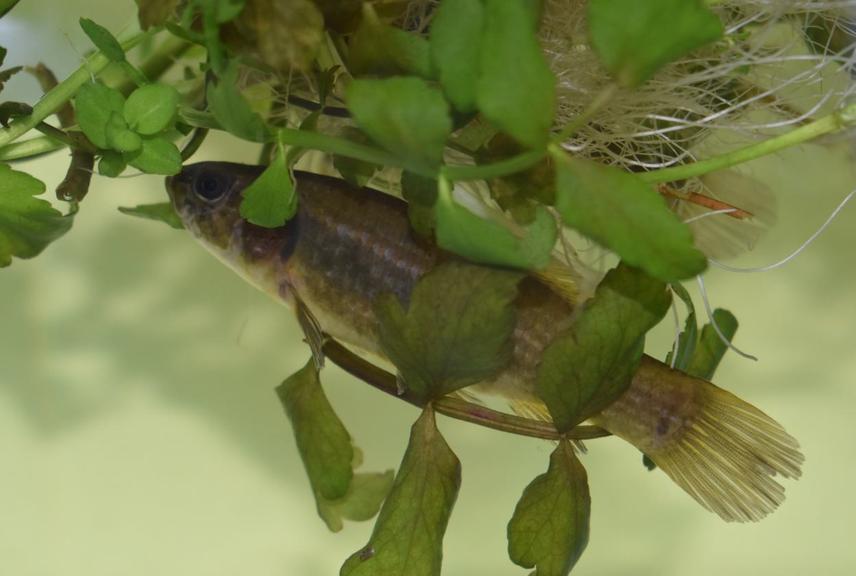Srećko Čolić
The main aims are to:
- determine the mudminnow's current distribution,
- collect main biological and ecological information,
- develop an efficient program for its conservation.

Monitoring of Umbra krameri behaviour in laboratory.
The European mudminnow (Umbra krameri) is one of the rarest fish species in Bosnia and Herzegovina (BiH). It is endemic to the Danube and Dniester rivers watersheds, and is probably a Tertiary relict. Its single known finding in BiH is the Gromiželj swamp near Bijeljina. Biological information regarding this species in BiH is scarce, and its conservation status is not defined. During field investigations of suitable areas along the Sava River (from Kozarska Dubica to Bijeljina), the distribution of Umbra krameri in BiH shall be ascertained. Alongside field surveys, basic biological information concerning the species will be collected, together with ecological data regarding its habitats. Biological investigations will include noting the selected morphometric traits of encountered individuals, and basic ecological factors shall be analysed (water pH, temperature, dissolved oxygen, electrical conductivity), which determine the presence of Umbra krameri. Also, the macrozoobenthos community structure, and floristic composition of the habitats where the species is found shall be determined. Also, anthropogenic influences on the existing populations will be carefully defined, and priority Umbra conservation areas in BiH determined. All these data are crucial for future monitoring and protection programs. Also, we attend to provide DNA samples for genetic analyses for the future work.
Through this project, the wide public in Bosnia and Herzegovina shall be informed about this rare and in many ways specific endemorelict fish, its distribution and the necessity to protect its specific habitats, once its presence is confirmed. Through educational lectures, we intend to increase the local inhabitants' awareness, so they could be included in future protection of this species. Among the focal groups shall be students of Biology and Ecology and nature protection, as well as scientific workers, but also members of various non-governmental organizations included in nature protection. All activities mentioned here are of key importance for successful conservation.